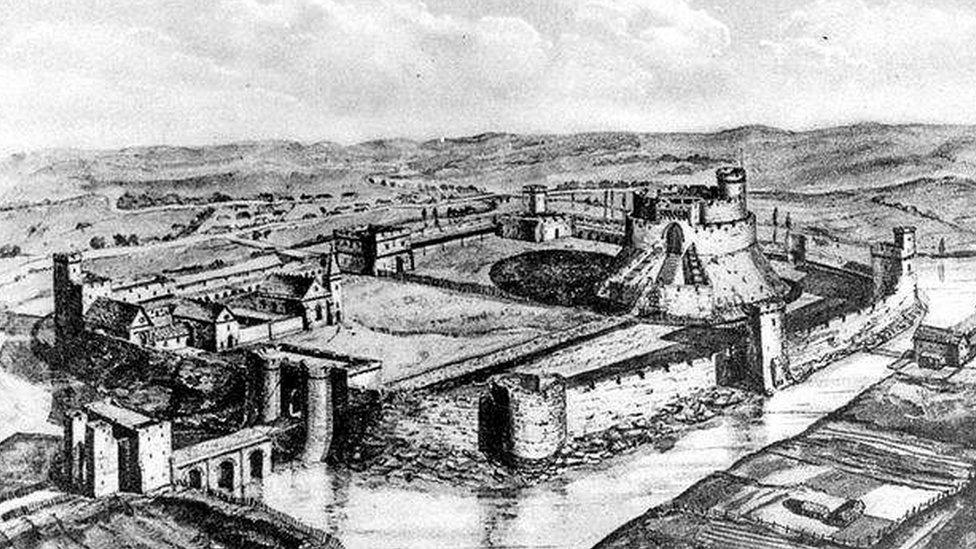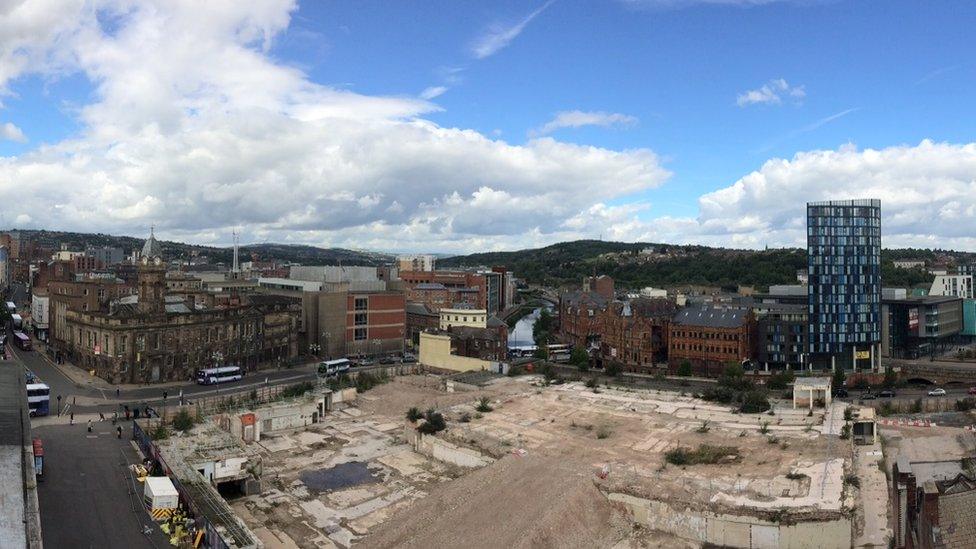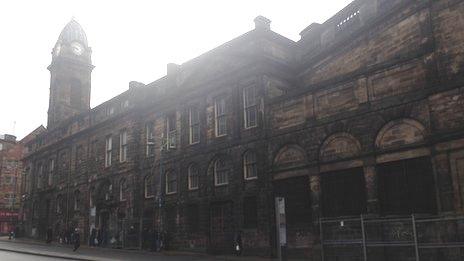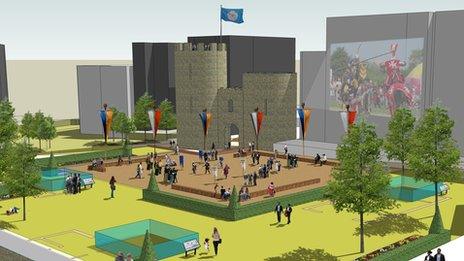Sheffield Castlegate: Castle landscape details unearthed
- Published

Dr Cat Jarman visited Wessex Archaeology's labs for the programme Digging For Britain
Archaeologists have unearthed more details about the size and position of a 13th Century castle in Sheffield.
The site where the castle once stood is being examined by a team commissioned by Sheffield City Council, as part of its plans to redevelop the area.
A borehole survey carried out last summer helped determine the size of the castle's "substantial" motte, thought to be about 164ft (50m) in diameter.
Specialists Wessex Archaeology have been working at the site since 2018.
Castlegate is the oldest part of Sheffield and has been inhabited since at least the 11th Century.
Mary Queen of Scots was imprisoned for 14 years at the castle and at Manor Lodge in the 1500s, under the care of the Earl of Shrewsbury.

Artist's impression of what Sheffield Castle looked like in the 13th Century
It was destroyed in 1648 and its remains were covered by Castle Market in the 1960s, with the only visible parts locked in basements.
The indoor market was built on the site but was demolished in 2015, allowing excavation work to begin.
The castle was built on a bedrock promontory where the River Sheaf and River Don meet.
A team of geoarchaeologists have been analysing the core samples to build up more understanding of what the landscape would have been like centuries ago.
Wessex Archaeology said it now understood the moat was located to the north east, where it exploited a former channel of the River Sheaf.
Milica Rajic, Infrastructure Director at Wessex Archaeology, said: "By analysing sediments from the borehole core samples we have been able to add more to the existing knowledge and provide a greater understanding of the history of Sheffield Castle.

The view of the previous Castle Market site, looking on to the Old Town Hall and Lady's Bridge
"We're excited that our work has helped to pinpoint in more detail how the people who built this impressive castle may have exploited the natural gradients and river channels the landscape offered."
The project is to feature on the BBC Two programme Digging For Britain.
Presenter Dr Cat Jarman, who visited Wessex Archaeology's labs for the programme, said: "This is such an exciting example of how science can reveal the nature of a site that is otherwise completely lost to us.
"Sheffield Castle was once an imposing part of the local landscape and to find evidence of its substantial motte helps us understand the castle's role in the city's development.
"It's also wonderful to be able to show these scientific methods on a popular programme like Digging for Britain, as they rarely make it to TV screens."
Councillor Julie Grocutt, Co-Chair of the Transport, Regeneration and Climate Policy Committee, said: "It has been so exciting to learn more about the secrets of Sheffield Castle, the birthplace of our city, throughout this project.
"As we progress with our plans to reinvigorate Castlegate and look towards the future, it's fascinating to find out more about its origins and our city's history."
Digging For Britain will be broadcast on BBC Two on 22 January and available on iPlayer afterwards.

Follow BBC Yorkshire on Facebook, external, Twitter, external and Instagram, external. Send your story ideas to yorkslincs.news@bbc.co.uk, external.
Related topics
- Published13 August 2018

- Published31 July 2017

- Published8 January 2015

- Published30 July 2014

- Published25 November 2013

- Published23 November 2013